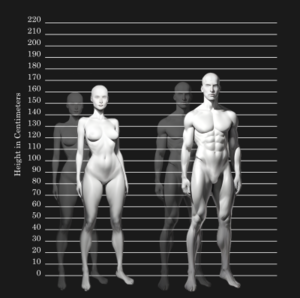Cheltai
| Ethnic group | |||
|---|---|---|---|
 ' | |||
| Height comparison | |||

| |||
| Eye colour |
| ||
| Hair colour and type |
| ||
| Total population | |||
| Location map | |||

| |||
| Regions with significant populations | |||
| Missingflag.png?nolink&40 test Missingflag.png?nolink&40 test | |||
| Languages | |||
| Religions | |||
| Related ethnic groups | |||
| [[ ]], [[ ]] | |||
Cheltai, also known as Chelt, Cheltic, Cheltani, and Cheltaian, is a modern umbrella term representing a set of diverse ethnicities from different linguistic backgrounds. These groups are unified by a shared genetic lineage that traces back to the Oriensis Plateau and plains of the Errea region. Classified as an Anario-Jorven type, Cheltai peoples predominantly inhabit the Cheltic Isles and the northeastern region of Anario Major.
Although there exists a range in eye color and hair pigmentation among the Cheltai, their skin complexion remains consistent, irrespective of regional differences. The unique Cheltai physiology is distinctive, but the specifics are yet to be provided.
Etymology
The term "Cheltai" is believed to have evolved from the self-designation "Chelt." These people resided in the Zhelov plains the 3000's to the 4000's, founding an early Iron Age civilization. This civilization has bequeathed a lasting cultural and legal legacy to the broader Cheltai ethnic domain. The initial documented usage of "Chelt" and "Cheltai" is yet to be confirmed. Within the Auresian Empire, they are also dubbed "Numidians," a name derived from the prefecture where the earliest known Cheltai settlements were established, neighbouring Zhelovian settlements to the south.
Physiology
A comprehensive description of Cheltai physiology, focusing primarily on genetic attributes and shared facial and body bone structures, is awaited.
Origins
Information on the origins of the Cheltai people, based on archaeological and written records, is pending.
History
The Cheltic civilization's emergence is dated around 3000 RH, with its zenith observed around 3500 RH. Both written chronicles and oral histories, corroborated by archaeological findings, indicate that this early Iron Age civilization was a blend of Proto-Cheltai from Ju8c3b8rveh and Deutero-Cheltai from southern territories who ventured into Errea in the early Paleolithic period. This period also witnessed the rise of Cheltic settlements in contemporary eastern Auresia. The civilization comprised a conglomerate of loosely affiliated city-states, which, although frequently at odds, would present a unified front against external non-Cheltic aggressors. These city-states shared a religious framework but diverged in deity worship and language.